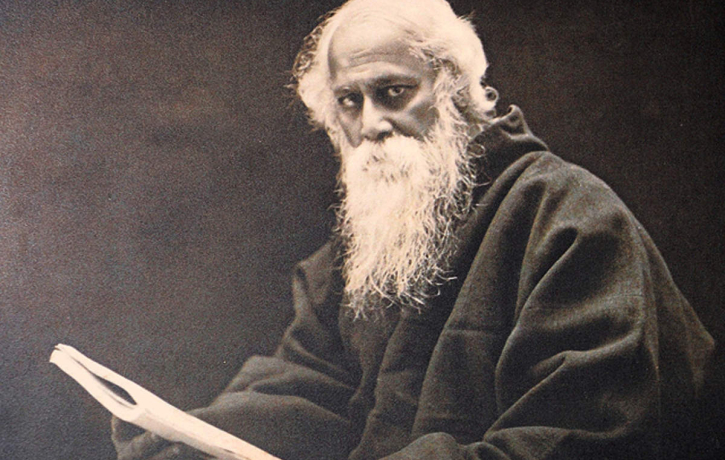Introduction
Rabindranath Tagore, poet, writer, musician, artist (born May 7, 1861) was a multi-talented Bengali man ,during the Bengal Renaissance. He was awarded the Nobel Prize in Literature in 1913 for his book “Gitanjali.” While promoting independence from Britain, Tagore was a critic of nationalism. Along with modernizing Bengali art, he established Visva-Bharati University. He is the author of “Gitanjali,” “Gora,” and “Ghare-Baire.” The national anthems of Bangladesh (“Amar Shonar Bangla”) and India (“Jana Gana Mana”) were also written by him. South Africa’s national anthem was influenced by Tagore, demonstrating how far reaching his impact is.
Family history
Thakur’s surname has been anglicized to become Tagore. They were originally from the Brahmin caste and went by the surname Kushari.
Life and events
Early life
Born on May 7, 1861, Rabindranath Tagore grew up in Calcutta during the Bengal Renaissance. He had little formal schooling, yet he traveled and did independent research to learn about a variety of topics. Early poems and stories by Tagore showed extraordinary inventiveness and were sometimes mistaken for forgotten masterpieces. His examination of subjects such as Sikhism demonstrated his wide range of interests and abilities.
Shelaidaha
After a brief legal education in England, Rabindranath Tagore returned to Bengal in 1880 and merged Brahmo and European customs. After being married in 1883, he oversaw family estates and wrote a lot, notably during his productive time between 1891 and 1895, which is referred to as the Sadhana period.
Santiniketan
1901 saw the establishment of an ashram and school by Tagore in Santiniketan. He persisted in writing despite suffering personal setbacks, becoming well-known in the West for his 1912 translation of “Gitanjali,” and taking home the 1913 Nobel Prize in Literature. Against the backdrop of the 1919 Jallianwala Bagh massacre, he declined a knighthood in order to devote himself to social reform and rural development, eventually forming the Institute for Rural Reconstruction by 1921. Along with that, he ran an anti-caste campaign.
Twilight years
Later life regarded Tagore as a “peripatetic litterateur,” who questioned social boundaries. The chief’s remarks about humanity touched him during a visit to an Iraqi desert encampment in 1932. Gandhi’s theory that an earthquake was a form of divine vengeance was challenged by him in 1934. Because of his regard for scientific laws, Tagore’s works have expanded into science. His final poem expressed a desire for love and forgiveness. He battled a protracted illness before passing away on August 7, 1941, leaving behind moving poems.
Travels
Traveling thirty countries between 1878 and 1933, Tagore won praise for his writings all around the world. His extensive travels throughout Europe, the Americas, and Asia, together with his interactions with notable personalities such as Yeats and Andrews, shaped his perspectives on nationalism and unity.
Works
The Bengali polymath Rabindranath Tagore authored plays, novels, essays, songs, and poetry. His poetic and upbeat writing, which frequently portrayed the lives of common people, is what made him most famous. The Bengali short story is also credited to Tagore.
Novels
Novels by Rabindranath Tagore examine identity and societal challenges. “Gora” addresses Indian identity, “Ghare Baire” critiques nationalism, and “Chokher Bali” defends the rights of widows. His lyrical novel “Shesher Kobita” even parodies his own name in a lighthearted manner.
Poetry
The most famous collection of poems by Rabindranath Tagore, “Gitanjali,” is what won him the 1913 Nobel Prize in Literature. Folk music and folk art were among his many influences, and he combined the two to create his own style.






